All products featured are independently chosen by us. However, SoundGuys may receive a commission on orders placed through its retail links. See our ethics statement.
Sony ULT Field 3 vs JBL Charge 6: Best Bluetooth speaker under $200?
Published onApril 18, 2025


When it comes to premium portable Bluetooth speakers under $200, the new Sony ULT Field 3 and JBL Charge 6 are two of the top contenders vying for your outdoor listening dollars. Both speakers promise rugged durability, impressive sound, and long battery life—but they take notably different approaches to delivering on these promises. Let’s break down how these two adventure-ready speakers stack up against each other to help you decide which one deserves a spot in your backpack.
Editor’s note: This article on the Sony ULT Field 3 vs JBL Charge 6 was published on April 18, 2025, and is the first version of the article. Updates will follow as the market changes.
What’s it like to use the Sony ULT Field 3 compared to the JBL Charge 6?
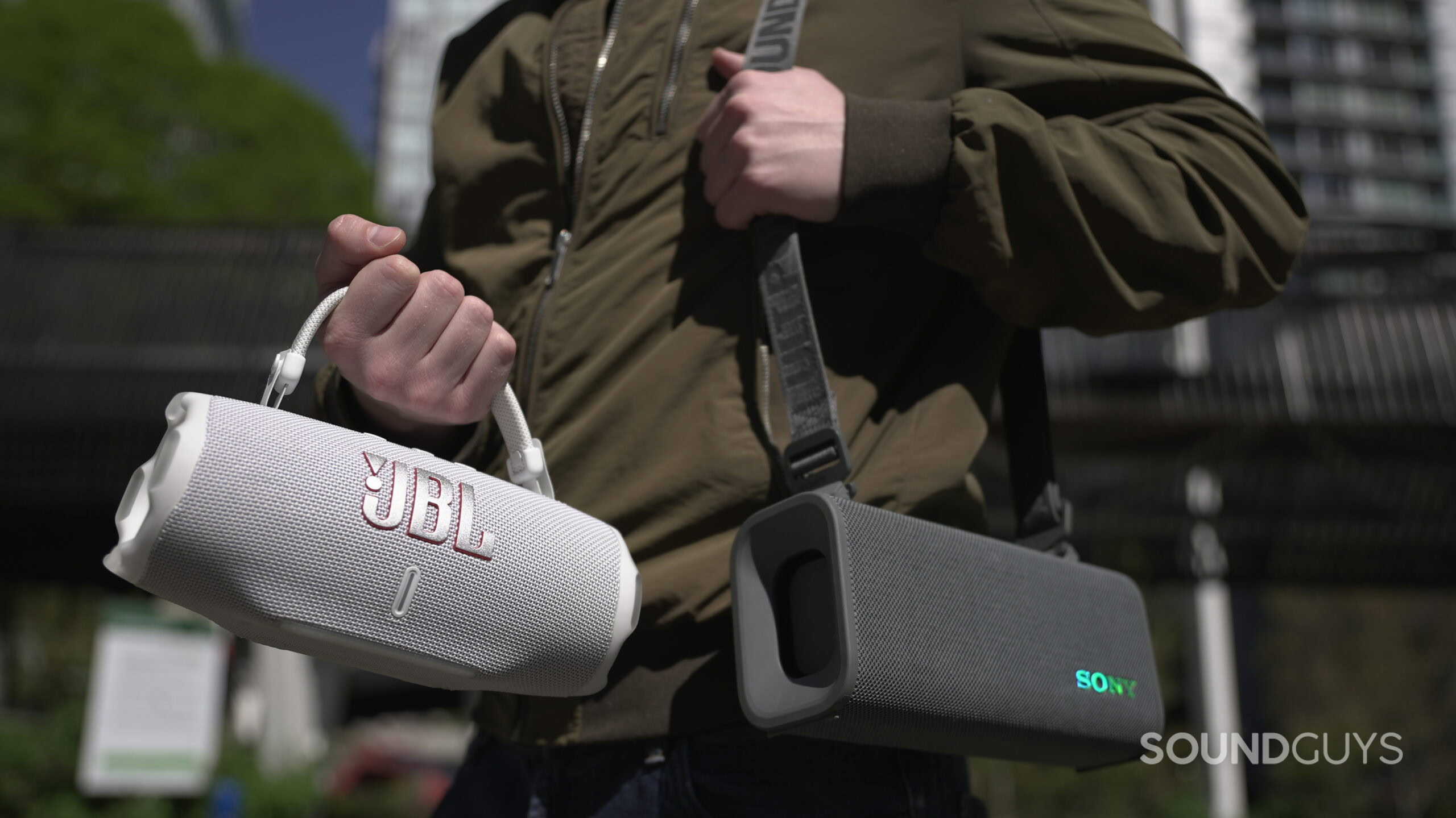
The Sony ULT Field 3 and JBL Charge 6 share a similar rugged design philosophy but with some distinct differences in execution. The ULT Field 3 is rectangular and wrapped in durable fabric with plastic end caps protecting its dual passive radiators. It’s slightly larger than the Charge 6, making it less packable but still portable thanks to its included adjustable shoulder strap with clever recessed connectors that sit flush when not in use.
The JBL Charge 6 maintains the cylindrical design of its predecessors but comes with some thoughtful upgrades. Most notably, it also features a new detachable handle that can be configured either as a traditional handle or as a carrying loop. JBL has also redesigned the base with a wider, flatter surface compared to the previous model’s silicone strips, making it more stable and less prone to rolling off surfaces.
Both speakers boast impressive durability credentials. The ULT Field 3 is IP67 rated, making it dustproof and water-resistant while also being “drop-proof, rustproof, and shockproof,” according to Sony. The Charge 6 goes a step further with an IP68 rating. JBL also explicitly certifies the Charge 6 as “drop-proof” from a height of one meter, even onto concrete, and has beefed up the rubber bumpers that protect its passive radiators.
How do you control the Sony ULT Field 3 and JBL Charge 6?
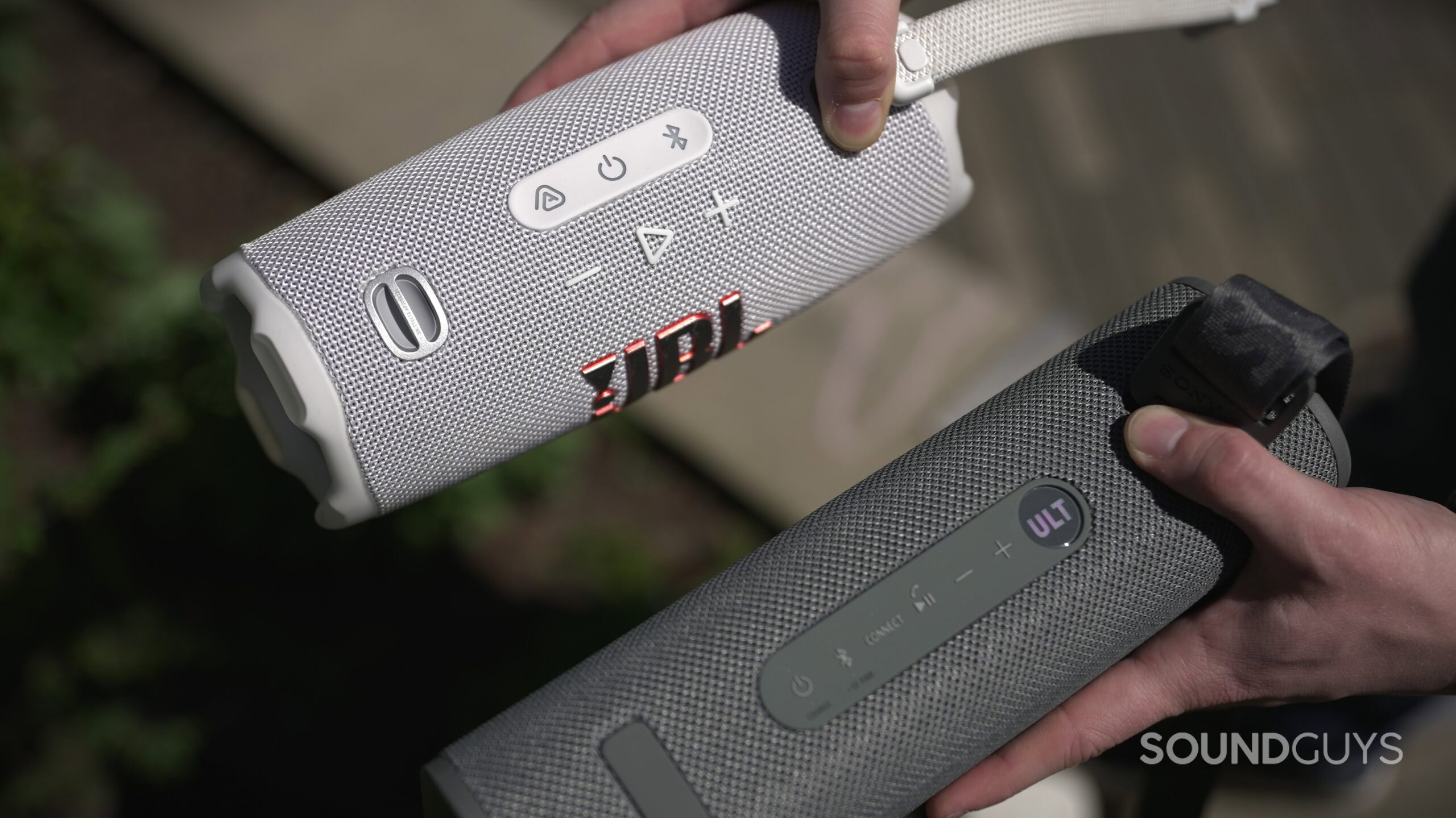
The Sony ULT Field 3 places its controls along the top of the enclosure in a single control strip. These include:
| Action | Power button | Bluetooth button | Connect button | Play / Pause | Volume - | Volume + | ULT button |
|---|---|---|---|---|---|---|---|
| Action 1x Press | Power button Power on / off | Bluetooth button Enter pairing mode | Connect button Pair with other ULT speakers | Play / Pause Play / pause / answer / end call | Volume - Volume down | Volume + Volume up | ULT button Toggle ULT mode on / off |
The JBL Charge 6 also positions its controls on the top of the speaker but splits them into two areas. One dedicated strip houses the power, Bluetooth, and Auracast buttons (which replace the previous Party Boost button), while another area contains playback controls.
| Action | Power button | Bluetooth button | Auracast button | Play button | Volume + | Volume - |
|---|---|---|---|---|---|---|
| Action 1x press | Power button Turn on device | Bluetooth button Enter pairing mode | Auracast button Pair with other JBL Auracast supported speakers | Play button Play / Pause | Volume + Volume up | Volume - Volume down |
| Action 2x presses | Power button | Bluetooth button | Auracast button | Play button Next track | Volume + | Volume - |
| Action 3x presses | Power button | Bluetooth button | Auracast button | Play button Previous track | Volume + | Volume - |
| Action Press and hold | Power button | Bluetooth button | Auracast button | Play button Enter wired connection mode while inserting USB cable. | Volume + | Volume - |
One notable difference is that the Charge 6 offers track navigation through multiple presses of the Play button, a feature the ULT Field 3 lacks.
Should you use the apps of either Sony ULT Field 3 or JBL Charge 6?
The Sony Sound Connect app is somewhat essential if you want to maximize your experience with the ULT Field 3. The app allows you to toggle between “Priority on Sound Quality” or “Priority on Stable Connection” Bluetooth modes, pair with a second ULT Field 3 for stereo sound, and access the 7-band equalizer. However, there’s a significant limitation: you must choose between using the ULT Sound preset or your custom EQ settings—you cannot use both simultaneously. Also, the custom EQ simply cannot match the bass response of the ULT mode.
The JBL Portable app offers more flexibility with the Charge 6. It provides access to a 7-band customizable EQ without the same limitations as Sony’s app, four additional EQ presets, speaker pairing controls under the “Party Together” section, and the “Playtime Boost” feature for extended battery life (at the cost of sound quality). The app is also required for firmware updates.
How do the Sony ULT Field 3 and JBL Charge 6 connect?
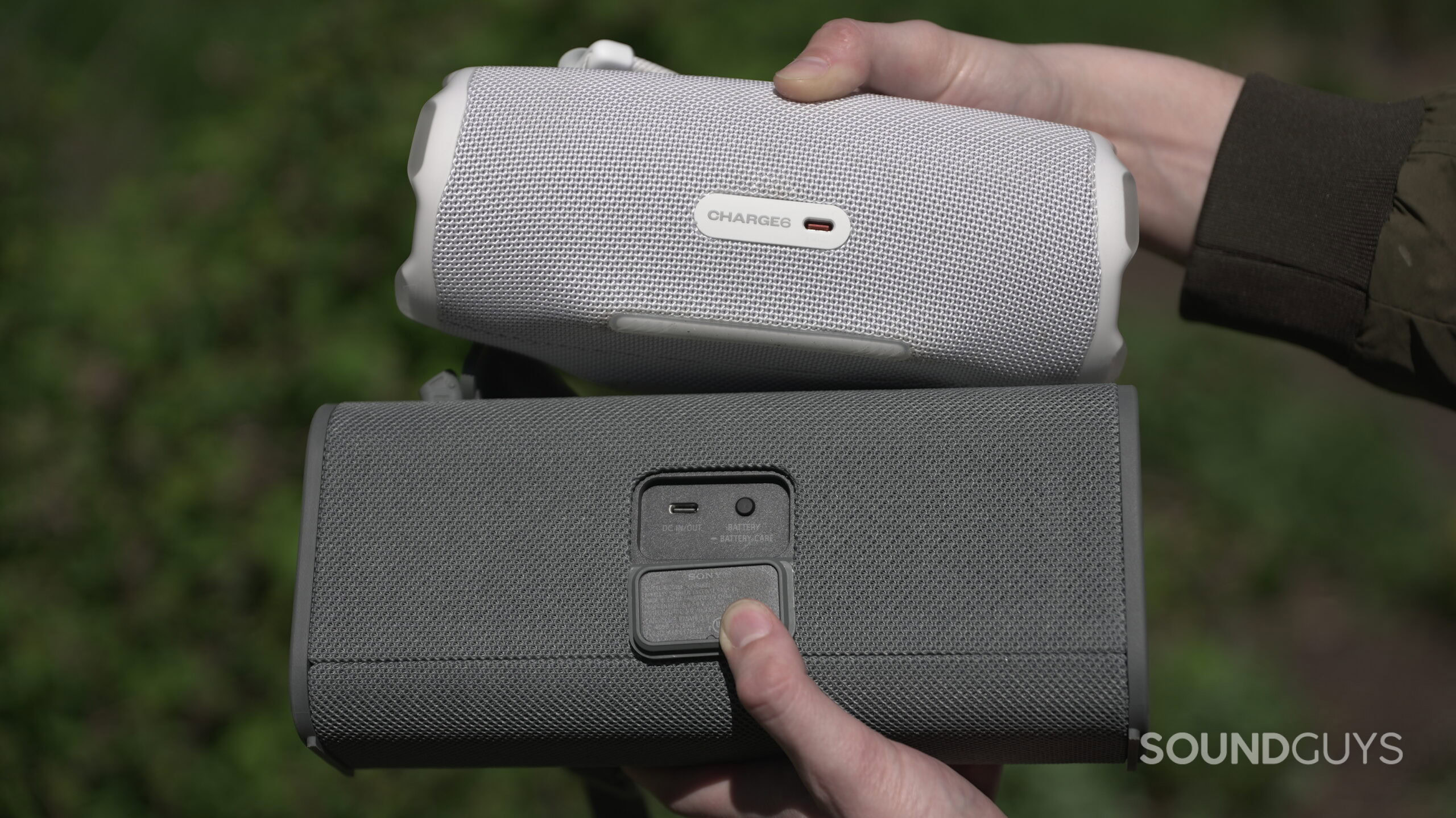
The Sony ULT Field 3 connects via Bluetooth 5.3 and supports Google Fast Pair, multipoint connection, and both SBC and AAC codecs. Its USB-C port serves as both an input for charging the speaker and an output for charging your devices. For connecting with other Sony speakers, it uses Sony’s Party Connect feature, allowing you to link up to 100 ULT speakers together.
The JBL Charge 6 ups the ante with Bluetooth 5.4 connectivity and adds a significant new feature: audio over USB, including support for lossless audio when using compatible services like Tidal or Apple Music. Like the Sony speaker, its USB-C port also doubles as a power bank to charge your devices. For speaker pairing, it uses JBL’s new Auracast feature, replacing the older Party Boost system. The downside is that Auracast isn’t backwards compatible with older JBL speakers that use Party Boost, meaning you can’t pair a Charge 6 with a Charge 5.
Is battery life better on the Sony ULT Field 3 or the JBL Charge 6?
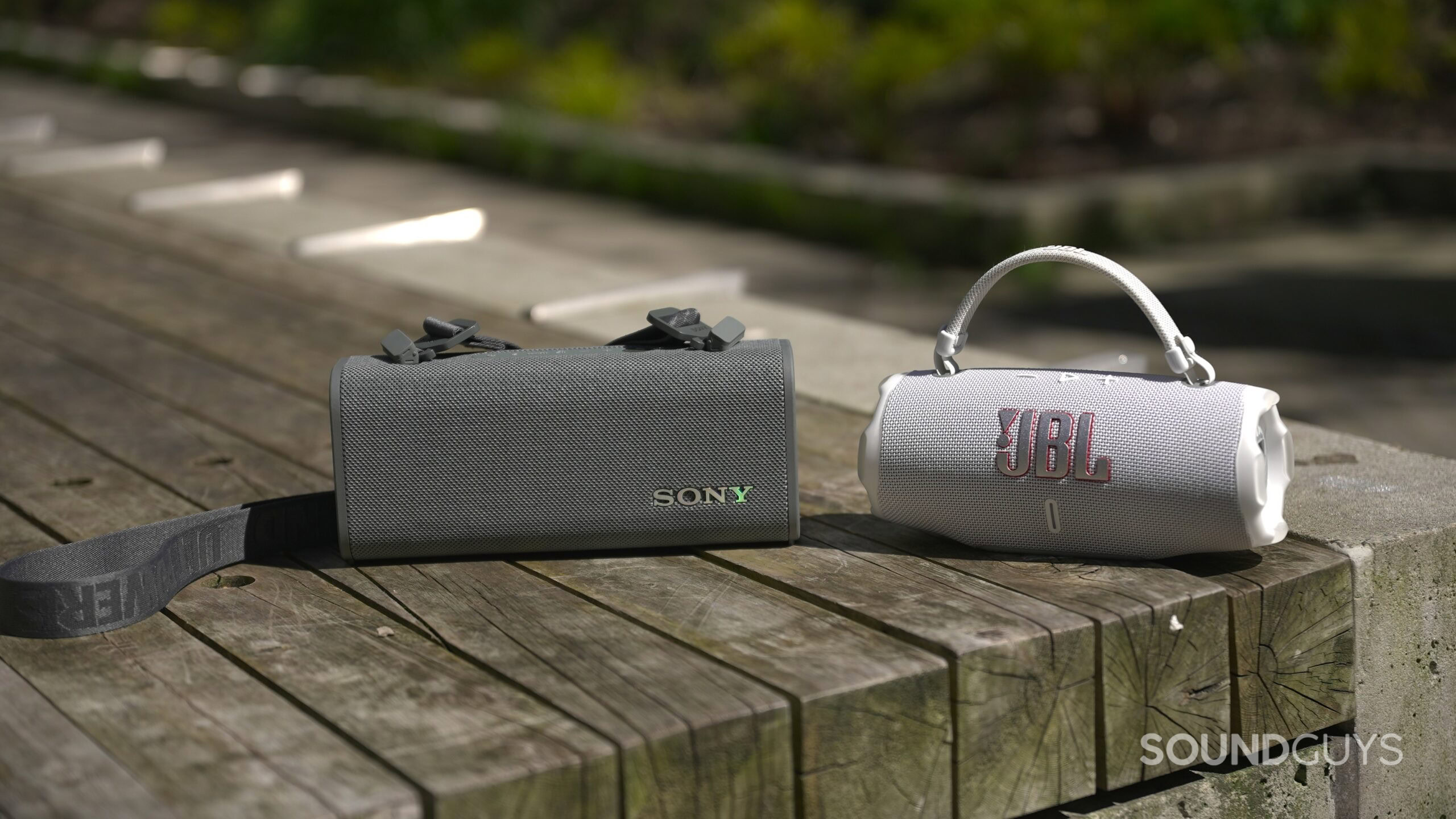
The Sony ULT Field 3 offers a respectable 24 hours of playback from a single charge with the ULT sound mode engaged. It also features quick charging capabilities, with a 10-minute charge providing approximately 122 minutes of playback.
The JBL Charge 6 extends battery life to up to 28 hours of playback, though there’s a caveat. JBL states that 24 of those hours are under normal operation, while the final 4 hours require activating the “Playtime Boost” feature, which significantly reduces bass response to conserve power. Even without this feature, the Charge 6 matches the ULT Field 3’s runtime and offers a slightly better quick charge feature, with a 10-minute charge delivering 150 minutes of playback compared to Sony’s 122 minutes.
Does the Sony ULT Field 3 sound better than the JBL Charge 6?
According to our Multi-Dimensional Audio Quality Score (MDAQS), the Sony ULT Field 3 scores higher overall, with a 3.4 rating compared to the JBL Charge 6’s 2.7. The ULT Field 3 particularly excels in Timbre (3.7 vs. 3.1) and Immersiveness (1.9 vs. 1.6), though both speakers score similarly in Distortion (Sony at 3.6, JBL at 3.3).
What we heard
The Sony ULT Field 3’s signature feature is its ULT sound mode, which delivers powerful bass and a generally pleasing sound profile right out of the box. We noted that with ULT mode engaged, the speaker provides full sound with solid low-end strength and clear treble detail. However, the major limitation is that you cannot modify this sound profile beyond simply turning ULT mode on or off. If you want to use the 7-band EQ, you lose the enhanced bass response that makes the ULT mode special.
The JBL Charge 6 takes a different approach, offering noticeably better bass strength than the Charge 5 straight out of the box. However, it has a slightly darker sound signature that might lack some clarity in the higher frequencies. The Charge 6’s 7-band EQ allows you to customize the sound to your preferences without any major limitations. We found that boosting specific frequency bands effectively addressed any perceived shortcomings in the default sound profile.
Should you get the JBL Charge 6 or the Sony ULT Field 3?
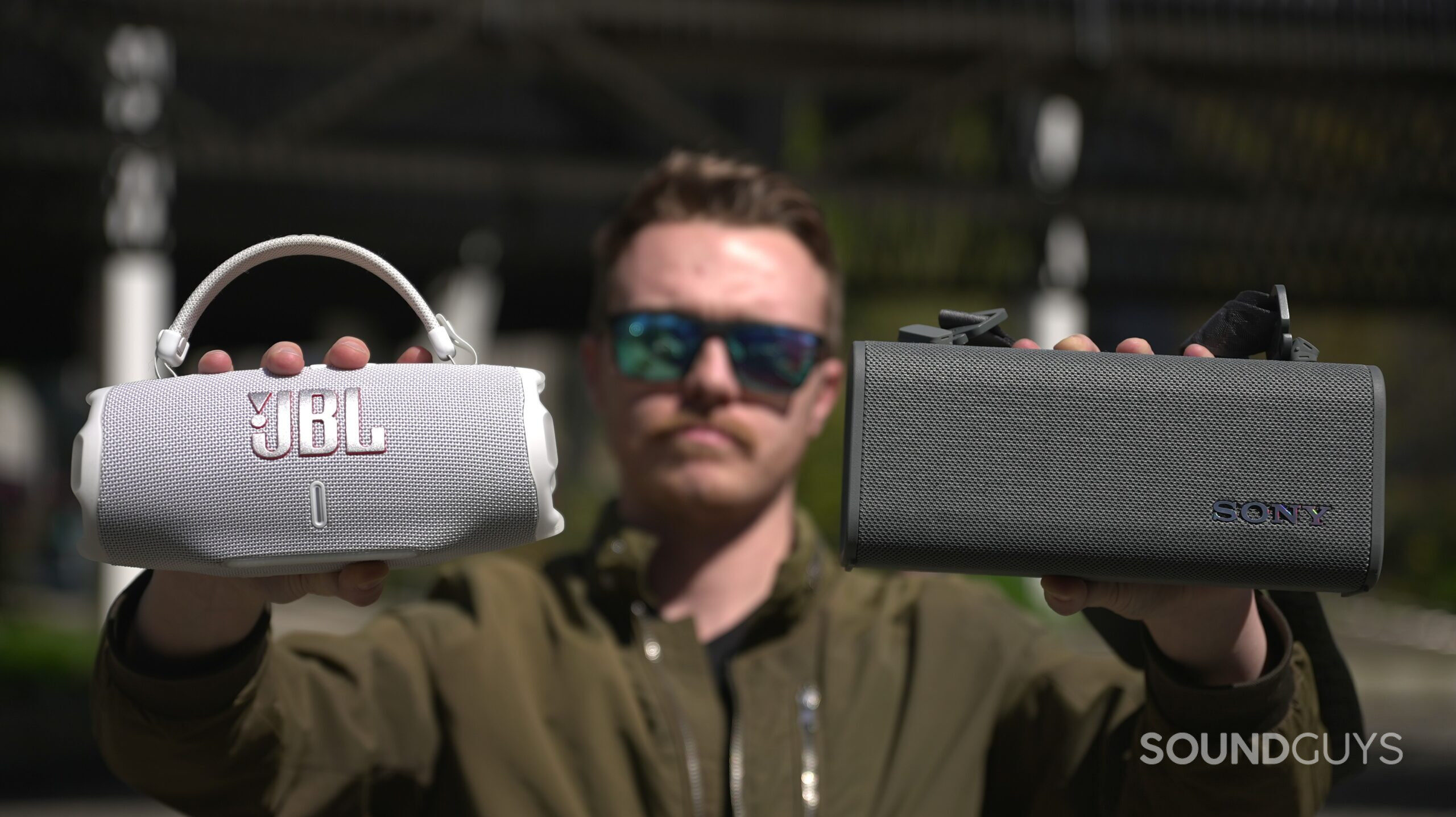
Both speakers have their strengths and weaknesses, and many similarities as well. So when it comes down to it, I think the main factors that would influence your buying decision are as follows:
Choose the JBL Charge 6 if you want:
- Better water resistance with IP68 rating vs Sony’s IP67
- Fully customizable 7-band EQ without restrictions
- Audio over USB capability with lossless support
Choose the Sony ULT Field 3 i you want:
- Bigger bass response when using ULT mode
- A built-in microphone for taking calls
- A shoulder strap design
For most users, the JBL Charge 6 offers a more well-rounded package with fewer significant compromises. It’s slightly longer battery life, better water resistance (IP68 vs IP67), more flexible sound customization options, and added features like lossless audio over USB make it the more versatile choice.
On the other hand, the Sony ULT Field 3 is best suited for listeners who prefer a simpler “set it and forget it” experience and are satisfied with the ULT sound mode without needing to tweak it further with an EQ. Its higher MDAQS scores also suggest a sound quality that potentially more people will enjoy out of the box, and the inclusion of a microphone for phone calls could be a deciding factor for some users.

Long battery life
7-band EQ
ULT setting sound quality
Shoulder strap included
Both speakers are priced identically at $199, so your decision should depend on which feature set better matches your listening preferences and usage scenarios.
What should you get instead of the Sony ULT Field 3 or JBL Charge 6?
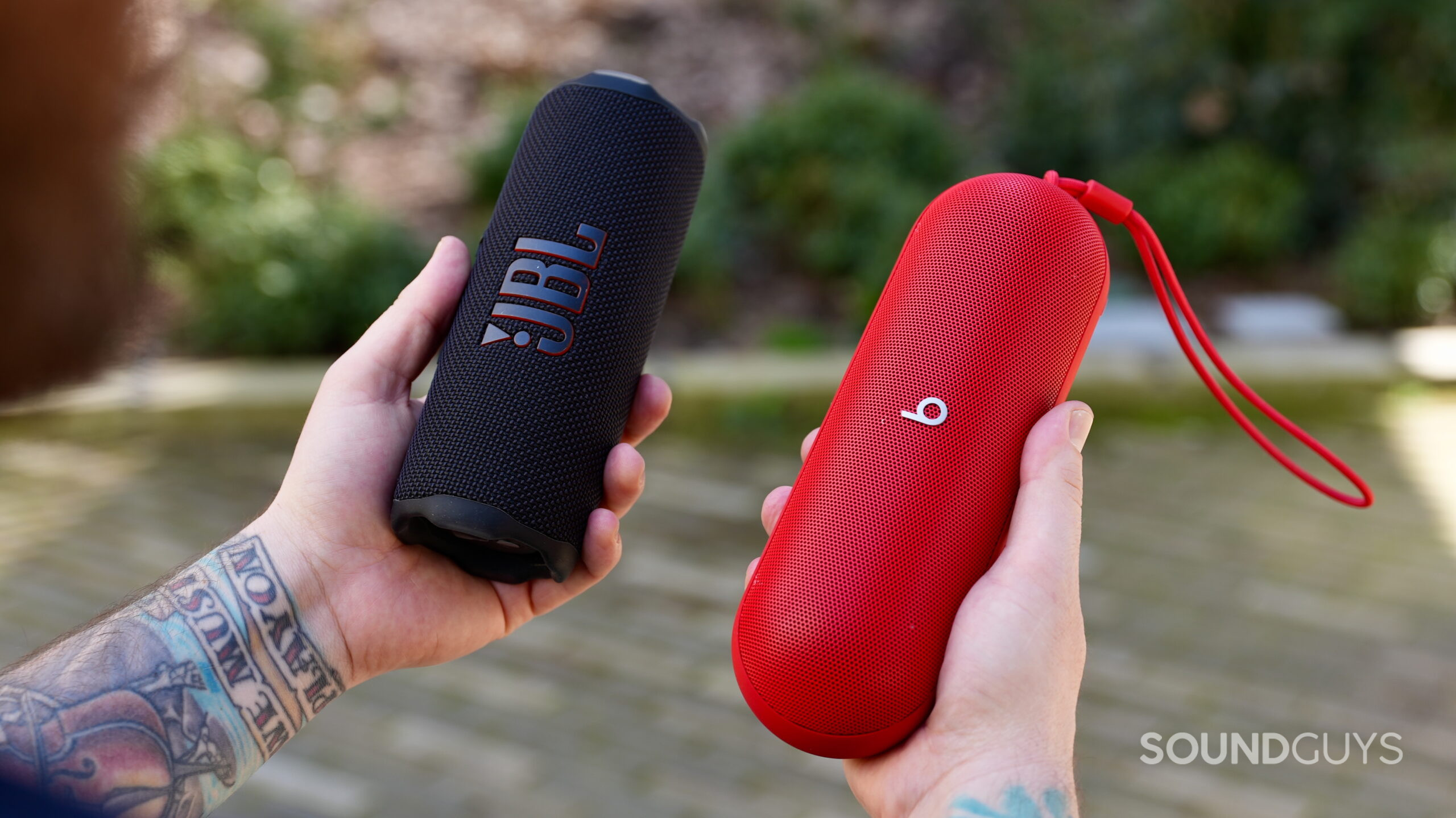
If neither the Sony ULT Field 3 nor the JBL Charge 6 seems like the perfect fit, there are several compelling alternatives to consider:
- The JBL Flip 7 ($149 at Amazon) offers many of the same features as the Charge 6—including IP68 protection, audio over USB, and carrying attachment options—but in a smaller, more affordable package. The tradeoff is reduced battery life at 16 hours compared to the Charge 6’s 28 hours.
- The Beats Pill ($149.99 at Amazon) provides impressive bass response with an IP67 rating and lossless audio over USB-C. Its angled, upward-firing design offers a different sound presentation that some listeners might prefer.
- For the budget-conscious, the Anker Soundcore Boom 2 ($89.99 at Amazon) delivers incredible value with 80W of stereo output, built-in party lights on its passive radiators, and various EQ options. While it’s not dust-proof, it is water-resistant with an IPX7 rating and designed to float on water.
Sony ULT Field 3 vs JBL Charge 6: Frequently asked questions
Both the Sony ULT Field 3 and JBL Charge 6 are mono speakers. However, each can be paired with a second identical speaker to create a true stereo setup (two ULT Field 3s or two Charge 6s).
Yes, both the Sony ULT Field 3 and JBL Charge 6 feature USB-C ports that double as outputs to charge your smartphone or other devices. This power bank functionality is particularly useful during outdoor activities when access to power may be limited.
Both speakers offer plenty of volume for medium-sized gatherings. The Sony ULT Field 3 provides plenty of usable volume before distortion sets in at higher levels, easily enough to fill a large living room or a medium-sized outdoor gathering. The JBL Charge 6 offers similar volume capabilities appropriate for outdoor use.
Neither the Sony ULT Field 3 nor the JBL Charge 6 features a traditional 3.5mm AUX input. However, the JBL Charge 6 does offer audio over USB, including lossless audio support, which can serve as an alternative wired connection option.
Yes, both the Sony ULT Field 3 and JBL Charge 6 can be used while charging. This is especially useful for extended listening sessions when you might not have enough battery life.
No, the JBL Charge 6 does not include a microphone for taking calls, so you’ll need to answer your phone directly. The Sony ULT Field 3 does have a built-in microphone for handling phone calls.